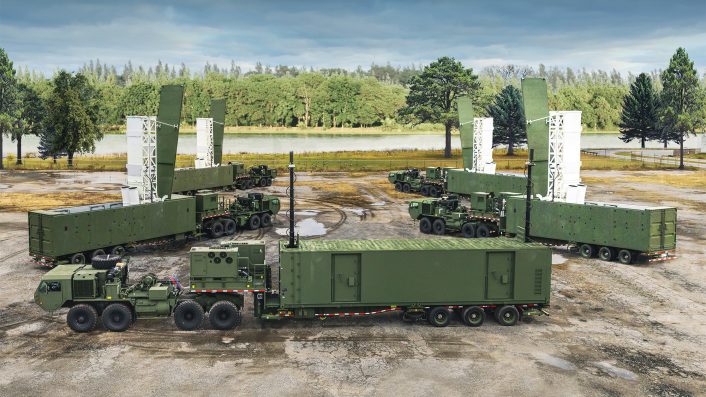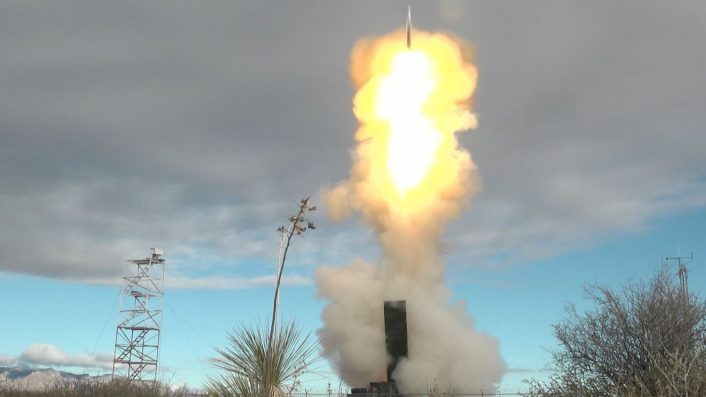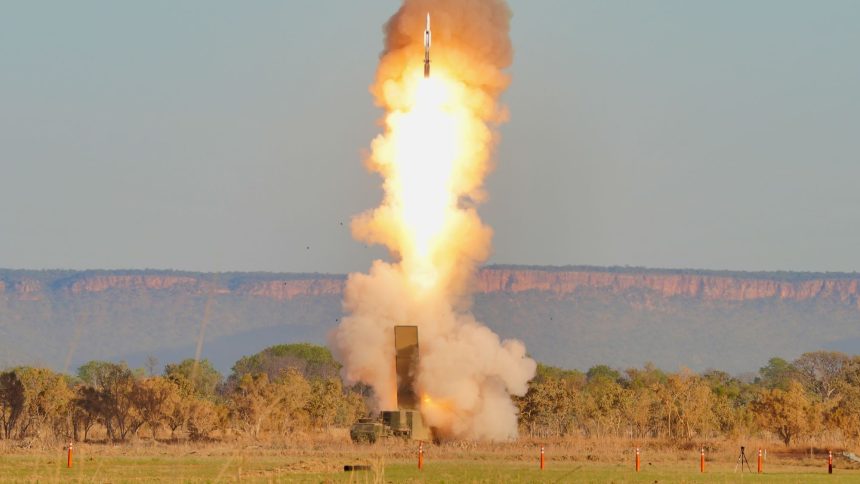The U.S. Army’s 3rd Multi-Domain Task Force conducted in the opening days of Exercise Talisman Sabre 2025 the first Mid-Range Capability live fire exercise outside the U.S.
The U.S. Army conducted the first live-fire of an Standard Missile 6 (SM-6), part of the Mid-Range Capabilities (MRC) Typhon system, outside the Continental United States (CONUS) during the current edition of Exercise Talisman Sabre in Australia. Launched on Jul. 16, 2025 from Australia’s Northern Territory by the 3rd Multi-Domain Task Force (MDTF), the missile successfully hit and sank an unspecified maritime target, said the press release.
The SM-6 Surface-to-Air Missile (SAM) is otherwise used to shoot down fast flying fighters, helicopters, cruise missiles and incoming ballistic missiles in their terminal stages of flight. The weapon has evolved to also include a surface-strike role, and is launched by the Mk 41 Vertical Launch Silo (VLS), that carries the missile aboard U.S. Navy Arleigh Burke-class destroyers, or the road-mobile Typhon Transporter Erector Launcher (TEL), which is itself derived from the Mk 41.
Images released on the DVIDS network showed various stages of the missile leaving its Mk 41 cell, with no visual or information about the type of maritime target that was hit. The live fire demonstrated the “rapidly advancing capability and capacity […] to deploy advanced, land-based maritime strike capabilities in support of regional security and stability,” the captions said.
The test, the bilateral Talisman Sabre exercise and the participation of the 10th Australian Brigade highlighted the strength of the U.S.-Australia alliance, said the U.S. Army. In fact, the successful live fire test validated combined joint targeting and command-and-control interoperability between 3MDTF and the combined-joint force involved in the exercise, explained the service.
A major win for the 🇺🇸🇦🇺 alliance and regional stability in support of a #FreeAndOpenIndoPacific.#TalismanSabre25 #TS25 #AlliesAndPartners #MultiDoman #Lethality #Campaigning #OperationPathways
📸 by Sgt Perla Alfaro, 3rd MDTF pic.twitter.com/0m1sxMhZ3G
— U.S. Army Pacific (@USARPAC) July 16, 2025
What speaks to the significance of the test is that Talisman Sabre has a larger multinational component, with participation of the Japanese, Singaporean, French and South Korean in massive ground maneuvers.
The test comes a day after Germany officially requested clearance to buy the Typhon. Interestingly, the request follows last year’s announcement that U.S. forces in Germany would be reinforced with missile systems like the Typhon from 2026.
The test
With this being the first time that a land-based MRC was fired west of the International Date Line (IDL), the U.S. Army says the test also displayed its “ability to forward deploy U.S. Army Long-Range Precision Fires (LRPF).” The 3rd MDTF and the joint force validated the ability to “execute command and control (C2) of land-based maritime strike from a combined muti-domain C2 node in conjunction with the Australian Army’s emerging multi-domain formations.”
The 3rd MDTF commander, Col. Wade Germann, called the MRC deployment and successful execution of an SM-6 live fire against a maritime target another significant step in the service’s ability “to deploy, integrate, and command and control advanced land-based maritime strike capabilities.” The release stressed on how the test laid emphasis on the Command and Control (C2) interoperability between the 3rd MDTF and its counterpart, the 10th Australian Brigade, through the Land Effects Coordination Cell.

Neither the U.S. or Australia mentioned which assets were involved in the test in addition to the Typhon. The Australian MQ-4C Triton or P-8 Poseidon might have possibly been used to identify the maritime target during the engagement process.
“The live fire provided valuable insights and lessons learned that will inform the development and employment of future land-based maritime strike and strategic strike capabilities,” added the release. A single system can be carried in a C-17 Globemaster III cargo airplane, as was seen in May 2024, when a MRC Typhon was moved to the Danish island of Bornholm in the Baltic Sea for an exercise.
Exercise Talisman Sabre
The ongoing edition of the Talisman Sabre, which began on Jul. 14, 2025, involves 19 nations and over 30,000 service members, according to the Australian Department of Defense. This is also billed as the largest bilateral military training event between the United States and Australia to date.
A US Navy MK31 Medium Tactical Vehicle Replacement drives a of containerized launching system off of a US Air Force C-17 Globemaster III at Bornholm Airport in Denmark on May 5. The containerized missile launcher conducts a rehearsal in Bornholm on May 6. pic.twitter.com/WOnmZu69q1
— Ryan Chan 陳家翹 (@ryankakiuchan) May 6, 2024
“This represents the most complex Talisman Sabre iteration ever conducted,” the U.S. Army said in its release. “The scope of geography being trained upon, the number of service members present, and the advanced technology and capabilities being demonstrated reflect the professionalism and lethality of participating nations. Over the coming weeks, these troops will be tested, capabilities rehearsed and resolve for enduring regional stability clearly demonstrated.”
MRC Typhon
The MRC Typhon, besides the SM-6 (Standard Missile-6) tweaked for surface strikes, can also employ the Tomahawk LACM (Land-Attack Cruise Missile). Both are reported to have ranges of over 1,500 km.
The Typhon system is one component of the U.S. Army’s Multi-Domain Task Force (MDTF). The other components are the Long-Range Hypersonic Weapon (LRHW) and Lockheed Martin’s Precision Strike Missile (PrSM), with ranges of 2,776 km and 400- 500 km, respectively.
A full Typhon battery consists of four launchers, a trailer-based mobile command post, and other ancillary vehicles and equipment, according to publicly released information by the Army.

Meanwhile, the PrSM Increment 1 variant achieved Milestone C on Jul. 2, 2025, “signalling the program’s transition into the Production and Deployment Phase,” the Program Executive Office Missiles and Space announced. This followed a “double shot” live fire trial of the PrSM at the White Sands Missile Range in New Mexico on Nov. 19, 2024, part of a “production qualification flight test.”









